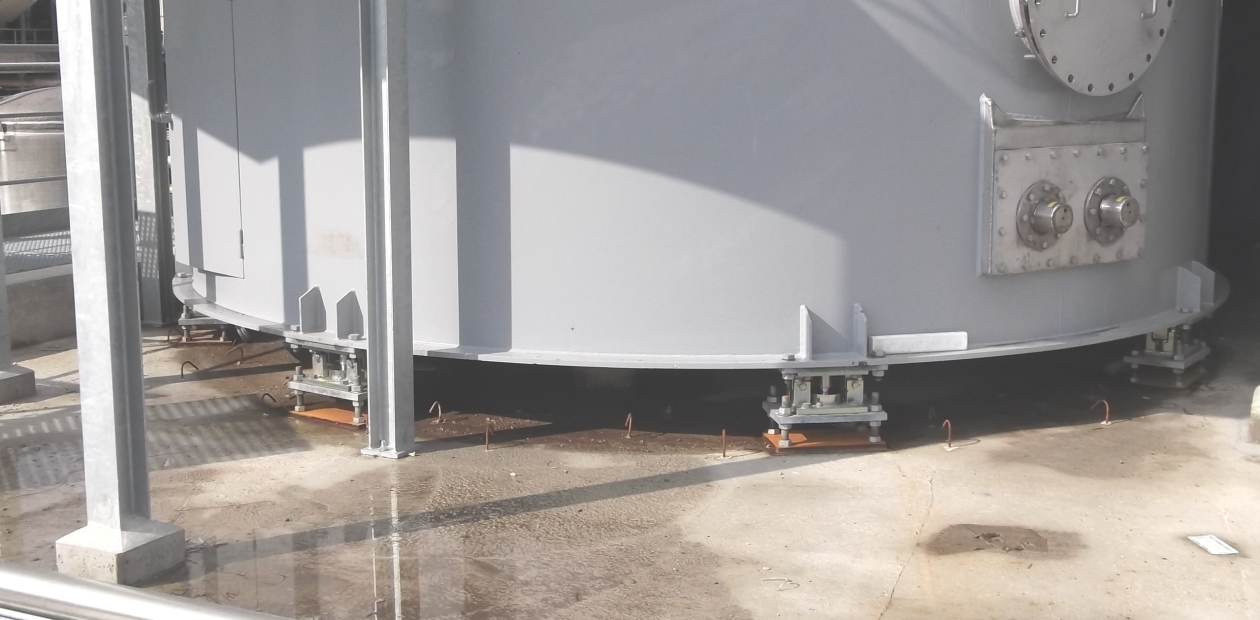
Unlike low-viscosity liquids and gases, bulk solids are heavy-flowing materials that make level monitoring difficult, e.g. when bridges form in the material or the material is unevenly distributed in the silo.
Some materials also have a fluctuating density, which makes it even more difficult to determine the mass of raw material via fill level.
In such cases, weighing the silo is a particularly good way of ensuring accurate fill level control. Here, the silo stands on load cells and thus records the mass of the material regardless of its position and distribution in the silo.
Since the weighing is integrated into the structure of the silo, the question is how this can be done safely. The scale becomes part of the structure and therefore also consideration of its static integrity needs to be taken into account.
In order to simplify this process, Scaime has developed solutions that make it easier construct and operate silo weighing in all steps of the project.
During the planning and construction phase, the statics of the silo are designed or checked in such a way that the safety of the entire construction is not compromised and optimal weighing results are achieved.
Particularly important here are:
In the planning phase, pre-calculated static reports of the silo are used to determine the required safety forces for the weighing kit and the load cells. These calculations include forces due to external factors such as wind, snow load, earthquakes and other uncertainties.
Based on this data, and using the provided pre-calculated design verifications of the weighing kit according to EN1993 by the TÜV Süd a suitable weighing system can be chosen. Checking the design of the weighing kits is an elementary component in the safety consideration and saves time in the construction of the silo scale.

When installing any industrial system, it is important that it can be done quickly and safely. Labour time on site is costly and stoppages of the installation process must be avoided.
To simplify the installation process, Silosafe weighing kits are equipped with various features to ensure a smooth process:
Mounting the mechanics
The operation of a silo with weighing is low-maintenance and requires little attention. Load cells of type R10X are designed in IP68 protection class as standard and are therefore fully encapsulated. If a measurement cable is damaged, the load cell can be replaced without interfering with the mounting kit and thus the construction of the silo. During this process, the safety of the silo is constantly guaranteed by the mounting kit.
Even more convenient is the exchange of cables for load cells with M12 connectors. Here, the measuring cable can be replaced without having to remove the load cell. A 6-wire connection compensates for different cables and cable lengths.
Another advantage of a connector on the load cell is the simple use of special cables, e.g. for optimum compatibility with chemical substances.
In Europe, the Construction Products Regulation (N°305/2011) states that the load-bearing elements of metal structures of buildings placed on the market must comply with the EN1090 standard and be CE marked. In the context of silo weighing, Silosafe kits can be considered in applications subject to the EN1090 regulation as follows:
To meet this requirement, SCAIME has had its quality system certified to EN1090 in performance class EXC2. This class implies that the entire process, from product design to delivery, must be covered by a qualified and documented QM system.
An EN1090-certified installation kit of class EXC2 provides the assurance: